|
Contact the ACC Registration and Housing Center |
Accreditation Information
Educational Need and Goals
Statement of Educational Need/Purpose
Cardiovascular disease (CVD) is the world's leading cause of death, underscoring the priority to develop and deliver education to improve care and outcome for individuals with CVD. ACC.26 is committed to delivering innovative and interactive education that addresses the evolving landscape and needs of evidence-based cardiovascular care across the world. This annual scientific meeting, available both in-person and virtually, will provide access to the latest CVD research and clinical advances on a global scale. It will also promote the exchange of best practices worldwide, fostering practical solutions for the entire cardiovascular care team. Attendees can expect essential education emphasizing cutting edge science, the implementation of evidence-based guidelines, and the promotion of health equity among diverse populations, ensuring improved cardiovascular outcomes.
Overall Goal
ACC.26 participants will incorporate the latest science and clinical evidence-based best-practices to improve prevention, care delivery, and outcomes for individuals with – or at risk for – cardiovascular disease.
Overall Learning Objectives
- Recognize the need for – and impact of – cutting-edge science on CVD prevention, diagnosis, and management.
- Apply guideline-driven practices to optimize care for patients with or at risk for CVD.
- Analyze strategies to deliver high-quality, patient-centered care by all members of the cardiovascular team.
- Identify new and emerging technologies, including artificial intelligence, that can improve healthcare delivery.
- Enhance retention of CVD knowledge through experiential learning that supports team-based care and provides a safe environment for applied learning.
- Employ strategies to reduce inequities in healthcare.
Pathway Learning Objectives
Cardiac Arrhythmias
The Cardiac Arrhythmias Pathway will equip learners with comprehensive knowledge and skills related to the diagnosis and management of cardiac arrhythmias and related conditions.
As a result of participating in the Cardiac Arrhythmias Pathway sessions, learners should be able to:
- Apply recent evidence and current guideline recommendations to the management of all types of cardiac arrhythmias.
- Evaluate medical and procedural options for prevention, detection, risk assessment, rhythm and rate management, and stroke prevention into the care of patients with atrial fibrillation and other supraventricular arrhythmias.
- Identify different patient populations that may benefit from contemporary device-based therapies including physiological pacing.
- Analyze the impact of emerging technologies, including AI and digital tools, on arrhythmia management and their practical applications in clinical settings.
- Recognize the nuances of arrhythmia management in specific populations including those with autonomic dysfunction and long COVID syndromes and incorporate risk stratification and stroke prevention strategies.
- Examine professional challenges in electrophysiology, including workforce training, diversity, family-career balance, and the role of women in EP practice, to foster professional development in the field.
- Discuss recent practice updates and guidelines for arrhythmia management, including lead extraction, drug-drug interactions, risk stratification, and evolving practice for patients with complex conditions.
Cardiovascular Disease Prevention
The Cardiovascular Disease Prevention Pathway aims to empower learners with the knowledge and skills to address the multifaceted aspects of cardiovascular health promotion and disease prevention, encompassing the latest evidence, emerging trends, and unique patient populations.
As a result of participating in the Cardiovascular Disease Prevention Pathway sessions, learners should be able to:
- Identify the controversies surrounding dietary interventions for cardiovascular health.
- Examine the latest evidence around new lipid lowering options.
- Integrate evidence-based approaches for return-to-play and occupational clearance in athletes and tactical professionals with cardiovascular conditions.
- Apply the latest evidence on anti-obesity medications, GLP-1 receptor agonists, and SGLT2 inhibitors in the context of cardiorenal-metabolic (CKM) prevention.
- Identify existing and emerging approaches to lowering lipoprotein (a), including medications, as well as the significance of racial and ethnic differences in lipoprotein (a) levels.
- Summarize the available evidence for different therapeutic approaches to managing treatment-resistant hypertension.
- Compare the benefits and pitfalls of utilizing emerging technology such as AI in cardiovascular dissemination, diagnosis, and education.
- Assess the unique female-specific risk factors for cardiovascular disease across a woman's lifespan related to hemodynamic changes of pregnancy, risk assessment, and imaging safety.
- Identify successful models for implementing prevention at the system level, including cardiac rehab, smoking cessation, global health strategies, and climate/pollution mitigation.
- Evaluate appropriate hormone therapy regimens for different patient populations such as cis gender and transgender individuals.
- Differentiate the unique challenges in the diagnosis and management of hypertension in special populations such as women, older adults, racial/ethnic minorities, and young adults.
Congenital Heart Disease
The Congenital Heart Disease Pathway will provide learners with a comprehensive understanding and proficiency in the evaluation and management of congenital heart disease, spanning the entire spectrum of life from childhood to adulthood.
As a result of participating in the Congenital Heart Disease Pathway sessions, learners should be able to:
- Apply practical strategies for assessing and managing non-ischemic cardiomyopathy in different age ranges.
- Recognize pearls and pitfalls in the surgical management of congenital valve disease, with emphasis on multidisciplinary decision-making.
- Classify and interpret approaches to the assessment and management of AAOCA and other congenital coronary anomalies.
- Develop appropriate care plans for women at high risk of maternal cardiac events during pregnancy and interpret approaches.
- Explain complex decision making and percutaneous and surgical therapeutic options in congenital valve disease and borderline ventricles.
- Describe optimal management of anticoagulation in congenital heart disease.
- Compare and contrast advanced imaging modalities in the evaluation of congenital heart disease and heart failure.
- Discuss the role of data registries in shaping clinical decision-making and outcomes in congenital heart disease.
- Evaluate the impact of non-clinical services and leadership engagement in congenital heart centers, including administrative and C-suite collaboration.
- Recognize the unique challenges and decision-making required to manage adults with congenital heart disease and end-stage heart failure, including lifelong care transitions.
- Assess innovations and interventions in complex congenital pathways such as Fontan circulation.
- Identify and manage aortopathy beyond genetic syndromes with attention to surveillance and risk stratification.
- Explore palliative and end-of-life care strategies for congenital heart disease patients across the lifespan.
Coronary, Peripheral and Structural Interventions
The Coronary, Peripheral and Structural Interventions Pathway will empower learners with advanced knowledge and skills in interventional cardiology, peripheral vascular procedures, and structural heart interventions. Through case-based learning, emerging technologies, and guideline updates, learners will gain expertise in managing complex cardiovascular conditions across diverse patient populations.
As a result of participating in the Coronary, Peripheral and Structural Interventions Pathway sessions, learners should be able to:
- Evaluate the clinical trial evidence and guideline updates to inform best practices in coronary, peripheral and structural interventions.
- Develop personalized antithrombotic regimens for patients undergoing structural and revascularization procedures, including those with acute coronary syndrome, concomitant atrial fibrillation, and venous thromboembolism.
- Apply advanced coronary and non-coronary techniques and technologies (including peripheral vascular interventions, percutaneous mechanical thrombectomy/thrombolysis, renal denervation, machine learning, and AI) to improve diagnostic accuracy and therapeutic outcomes for a broad range of cardiovascular conditions.
- Describe strategies for preventing and managing interventional complications.
- Utilize innovative diagnostic and therapeutic technologies to guide catheterization labs, including renal denervation, drug-coated balloons, and AI-driven tools.
- Interpret and integrate invasive coronary and ventricular physiology into clinical decision-making for patients with angina, ANOCA, MINOCA, and aortic stenosis.
- Describe strategies for preventing and managing complications, including cardiogenic shock and large-bore access techniques.
- Demonstrate proficiency in peripheral vascular interventions, including thrombectomy, venous disease, and neglected arterial territories.
- Assess structural heart therapies, including transcatheter mitral, tricuspid, and aortic valve interventions, and left atrial appendage occlusion.
- Explore off-label and emerging structural interventions for challenging anatomies and patient populations.
- Engage in leadership and practice-building discussions relevant to launching and sustaining interventional programs.
Heart Failure and Cardiomyopathies
The Heart Failure and Cardiomyopathies Pathway will equip learners with comprehensive knowledge and skills related to the diagnosis, evaluation, and management of heart failure and cardiomyopathies across a wide spectrum of patients.
As a result of participating in the Heart Failure and Cardiomyopathies Pathway sessions, learners should be able to:
- Formulate evidence-based care plans across the spectrum of heart failure phenotypes, applying current guidelines and consensus recommendations for diagnosis, evaluation, and management.
- Analyze the evidence on traditional and contemporary pharmacotherapies, monitoring, and therapeutic devices, to prioritize treatment in heart failure management.
- Evaluate special considerations of heart failure care including cardio-oncology, cardiogenic shock, critical care cardiology, cardio-obstetrics, cardiometabolic considerations, and cardiac amyloidosis.
- Identify advanced heart failure treatment options including considerations for cardiac transplant and left ventricular assist device, with attention to patient selection and management.
- Compare and contrast the phenotypes of heart failure with preserved ejection fraction (HFpEF), mildly reduced ejection fraction (HFmrEF), and reduced ejection fraction (HFrEF), and use this knowledge to tailor guideline-directed medical therapy (GDMT).
- Examine the emerging innovative technologies including machine learning and artificial intelligence to improve the diagnosis and management of heart failure.
- Discuss strategies to eliminate barriers to equitable care across the spectrum of health failure from prevention to advanced therapies.
- Identify emerging trends and critical issues for the management of cardiogenic shock.
Ischemic Heart Diseases
The Ischemic Heart Diseases Pathway will enable learners with the knowledge and skills needed to address the diverse aspects of ischemic heart disease, from diagnosis and risk assessment to advanced treatment options and holistic patient care.
As a result of participating in the Ischemic Heart Disease Pathway sessions, learners should be able to:
- Demonstrate comprehensive, evidence-based care in the evaluation and management of ischemic heart disease.
- Assess the advantages and limitations of various imaging modalities in guiding coronary revascularization decisions for ischemic heart disease patients.
- Differentiate challenging cardiovascular conditions for pre-operative assessment.
- Discuss advanced guideline directed strategies for managing left main coronary artery disease, including revascularization options.
- Analyze the geographical variation for management of ischemic heart disease including survival rates for out of hospital cardiac arrest and identify potential solutions in reducing variations in management where appropriate.
- Outline cardiovascular disease in women across their lifespan, from pregnancy through midlife and into older adulthood, including factors unique to women including pregnancy and perimenopausal changes which can impact cardiovascular disease.
- Integrate imaging modalities and risk stratification techniques in the evaluation of ischemic heart disease in patients with multiple co-morbidities and complex cardiovascular conditions.
- Explain the collaborative roles of multidisciplinary teams in the post-STEMI (ST-elevation myocardial infarction) care, particularly in cardiogenic shock, and the importance of team-based approaches.
- Identify existing and emerging treatment options for patients with refractory angina.
Multimodal Imaging
The Multimodal Imaging Pathway will equip learners with proficiency in the application, assessment, and integration of multimodality imaging techniques across various facets of cardiovascular care. Through expert-led sessions and case-based discussions, participants will explore the evolving role of imaging in structural interventions, coronary artery disease, and special populations, with a focus on collaborative, team-based decision-making.
As a result of participating in the Multimodal Imaging Pathway sessions, learners should be able to:
- Apply current guidelines and appropriate use criteria for imaging in cardiovascular disease prevention and management.
- Analyze the integration of machine learning and artificial intelligence into cardiovascular imaging workflows and their potential to enhance diagnostic precision.
- Evaluate original research and emerging innovations in imaging modalities.
- Discuss the role of multimodality imaging in structural heart disease management, emphasizing preprocedural planning and multidisciplinary CV care team collaboration.
- Recognize the utility of cardiac POCUS in evaluating patients with suspected or known cardiovascular disease.
- Explain the roles of multimodality cardiovascular imaging in special populations including patients undergoing cancer treatment, athletes, amyloidosis, pregnancy, and women with chest pain.
- Identify the role of imaging in the team-based management of HCM.
- Discuss sex differences in cardiovascular disease presentations including ischemic heart disease, and how these influence imaging and treatment strategies.
- Review the use of multimodality imaging in risk stratification for patients with systemic inflammatory disorders.
- Interpret advanced imaging techniques for vascular function and coronary flow assessment in INOCA.
Pulmonary Vascular Disease
The Pulmonary Vascular Disease Pathway aims to enhance learners' proficiency in the diagnosis and management of pulmonary vascular diseases, encompassing a multidisciplinary, patient-centered, and technologically advanced approach to care.
As a result of participating in the Pulmonary Vascular Disease Pathway sessions, learners should be able to:
- Integrate multimodal imaging and advanced diagnostics to refine PH phenotyping and personalize treatment strategies.
- Apply a multidisciplinary treatment approach to complex PH scenarios, including transitions from pulmonary embolism (PE) to CTEPH, therapy de-escalation, and identification of hidden high-risk features.
- Compose a physiology based pulmonary hypertension clinical management plan to guide patient care.
- Develop physiology-based management plans for pulmonary hypertension that incorporate real-world evidence and emerging tools for continuous monitoring and risk stratification.
- Compare and contrast updated pharmacological management strategies for Pulmonary Arterial Hypertension (PAH) in diverse populations, with attention to health equity, drug access, and evolving clinical guidelines.
- Demonstrate essential skills in the treatment and long-term management of CTEPH patients, including imaging interpretation, outcome tracking, and complication management.
- Describe the full diagnostic work-up for PH, emphasizing the role of imaging, omics data, and structural markers beyond right ventricular systolic function.
- Recognize and evaluate emerging technologies that support precision medicine in PH, including genomics, proteomics, and metabolomics integration.
Valvular Diseases
The Valvular Diseases Pathway aims to enhance learners' expertise in the diagnosis and management of valvular heart disease, while promoting collaboration within interdisciplinary teams and aligning practice with the latest guidelines and research findings.
As a result of participating in the Valvular Diseases Pathway sessions, learners will have an improved or reinforced ability to:
- Develop a strategic plan for building and collaborating with an interdisciplinary team to manage high-acuity valvular heart disease.
- Apply guideline-based and emerging strategies for aortic stenosis.
- Compare and contrast a variety of mature technologies for valve repair and replacement in patients requiring lifetime valve management.
- Apply current guidelines and recommend best practices for valvular care in clinical practice.
- Discuss effective patient education and shared decision-making strategies when managing complex cases of valvular heart disease.
- Explain the etiologic and morphologic classifications of tricuspid regurgitation and their associated outcomes.
- Identify prognostic considerations and evaluate treatment options for concomitant mitral and aortic valve disease.
- Construct a management plan for highly symptomatic patients with severe tricuspid valve disease and right-sided heart failure.
- Translate emerging research into practice for current valvular heart disease management guidelines.
- Assess the effectiveness of current treatment options for patients with functional mitral regurgitation.
- Optimize timing of surgical referral and intervention in patients with chronic aortic regurgitation, including those with concomitant aortic dilation.
- Examine the challenges of caring for patients with infective endocarditis, in collaboration with a multidisciplinary team.
Vascular Diseases
The Vascular Diseases Pathway will enable participants to enhance their knowledge and expertise in vascular medicine, while fostering a deep understanding of disparities, research, and complexities in the field.
As a result of participating in the Vascular Diseases Pathway sessions, learners will have an improved or reinforced ability to:
- Evaluate the effectiveness of different strategies used to address vascular health care disparities.
- Interpret the findings and implications of the latest research in vascular medicine including research that may lead to novel therapeutics for vascular disease.
- Discuss novel therapies in treating resistant hypertension.
- Identify the complexities of optimizing medical management of peripheral artery disease.
- Apply the most recent pulmonary embolism guidelines to diagnose, risk stratify and treat venous thromboembolism.
- Identify the vascular risks and management considerations for oncology patients undergoing therapy and individuals undergoing IVF treatment with a focus on hypertension and minimizing thromboembolic complications.
- Discuss the best management for optimizing CLTI outcomes.
- Debate controversies in the management of carotid artery disease.
- Evaluate the roles of the multidisciplinary team in the comprehensive care of peripheral vascular disease.
Credit Designation Statement
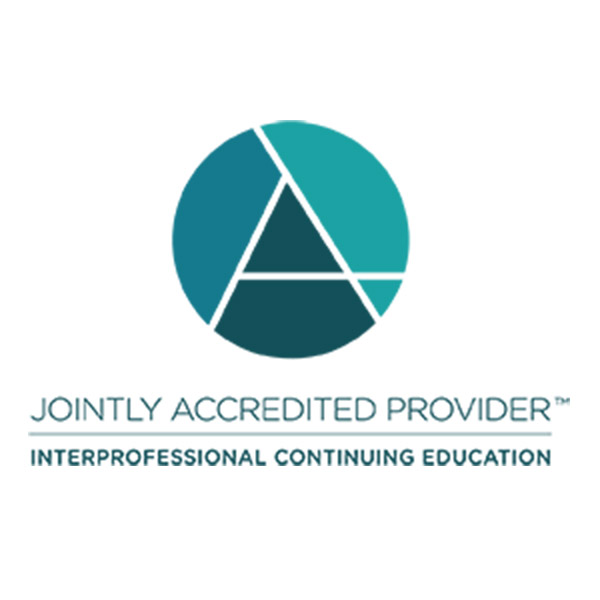
In support of improving patient care, the American College of Cardiology Foundation (ACCF) is jointly accredited by the Accreditation Council for Continuing Medical Education (ACCME), the Accreditation Council for Pharmacy Education (ACPE), and the American Nurses Credentialing Center (ANCC) to provide continuing education for the healthcare team.
Physicians
The ACCF designates this internet enduring material for a maximum of up to 21.75 AMA PRA Category 1 Credits™. Physicians should claim only the credit commensurate with the extent of their participation in the activity.
ABIM MOC
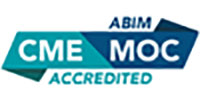
Successful completion of this CME activity, which includes participation in the evaluation component, enables the participant to earn up to 21.75 Medical Knowledge MOC points in the American Board of Internal Medicine's (ABIM) Maintenance of Certification (MOC) program.
Participants will earn MOC points equivalent to the amount of CME credits claimed for the activity. It is the CME activity provider's responsibility to submit participant completion information to ACCME for the purpose of granting ABIM MOC credit.
ABP MOC
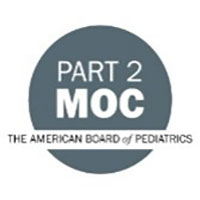
Successful completion of this CME activity, which includes participation in the evaluation component, enables the learner to earn up to 21.75 MOC points in the American Board of Pediatrics' (ABP) Maintenance of Certification (MOC) program. It is the CME activity provider's responsibility to submit learner completion information to ACCME for the purpose of granting ABP MOC credit.
Participants will earn MOC points equivalent to the amount of CME credits claimed for the activity. It is the CME activity provider's responsibility to submit participant completion information to ACCME for the purpose of granting ABIM MOC credit.
Nurses
The ACCF designates this educational activity for a maximum of 21.75 continuing nursing education contact hours and 13.00 continuing nursing pharmacology credit hours.
PAs
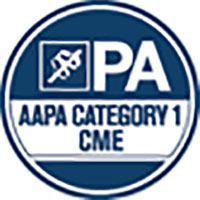
AAPA Credit Designation Statement
The American College of Cardiology Foundation has been authorized by the American Academy of PAs (AAPA) to award AAPA Category 1 CME credit for activities planned in accordance with AAPA CME Criteria. This activity is designated for 21.75 AAPA Category 1 CME credits. PAs should only claim credit commensurate with the extent of their participation.
Pharmacists
ACCF designates this continuing education activity for 21.75 contact hours of the Accreditation Council for Pharmacy Education. ACPE Universal Activity Number UAN JA4008225-0000-26-001-L01-(pharmacists) or UAN JA4008225-0000-26-001-L01-T (pharm techs).
Interprofessional Continuing Education (IPCE) Credit
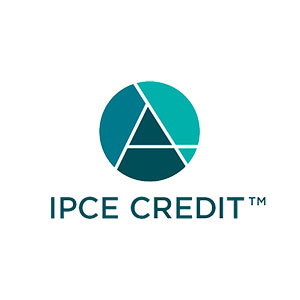
This activity was planned by and for the healthcare team, and learners will receive 14.00 credits provided by ACCF Interprofessional Continuing Education (IPCE) credits for learning and change.
Disclosure/Conflict of Interest Statement
As a provider jointly accredited by the Accreditation Council for Continuing Medical Education (ACCME), the Accreditation Council for Pharmacy Education (ACPE), and the American Nurses Credentialing Center (ANCC), the American College of Cardiology Foundation (ACCF) must ensure balance, independence, objectivity, and scientific rigor in all of their directly provided or jointly provided/co-provided educational activities. Planners, presenters, and other contributors, in a position to control the content are required to disclose to the audience all relevant financial relationships he/she and/or his/her spouse or domestic partner may have, occurring within the past 24 months, with any entity producing, marketing, re-selling, or distributing health care goods or services consumed by, or used on, patients. When an unlabeled use of a commercial product or an investigational use not yet approved for any purpose is discussed during an educational activity, the contributor should disclose that the product is not labeled for the use under discussion or that the product is still investigational.
ACCF is committed to providing its learners with high-quality activities and materials that promote improvements and quality in health care and not a specific proprietary business or commercial interest. The intent of this disclosure is not to prevent participation in educational activities by persons with a financial or other relationship, but rather to provide learners with information on which they can make their own determination whether financial interests or relationships may influence the education activity.
ACCF assesses conflicts of interest (COI) with its faculty, planners, managers, staff, and other individuals who are in a position to control the content of certified activities. All relevant potential conflicts of interest that are identified are thoroughly vetted by course directors, ACCF education staff, and members of the Accreditation Compliance Workgroup (ACWG) through a process that includes appropriate peer review for fair balance, scientific objectivity and validity, and patient care and safety recommendations.
ACCF has taken the necessary steps to ensure that all relevant financial relationships have been mitigated.

© 2025 American College of Cardiology Foundation. Visit ACC.org
Terms and Conditions • Registered User Agreement • Advertising and Sponsorship Policy • Privacy Policy • Cookie Policy • Contact Us
